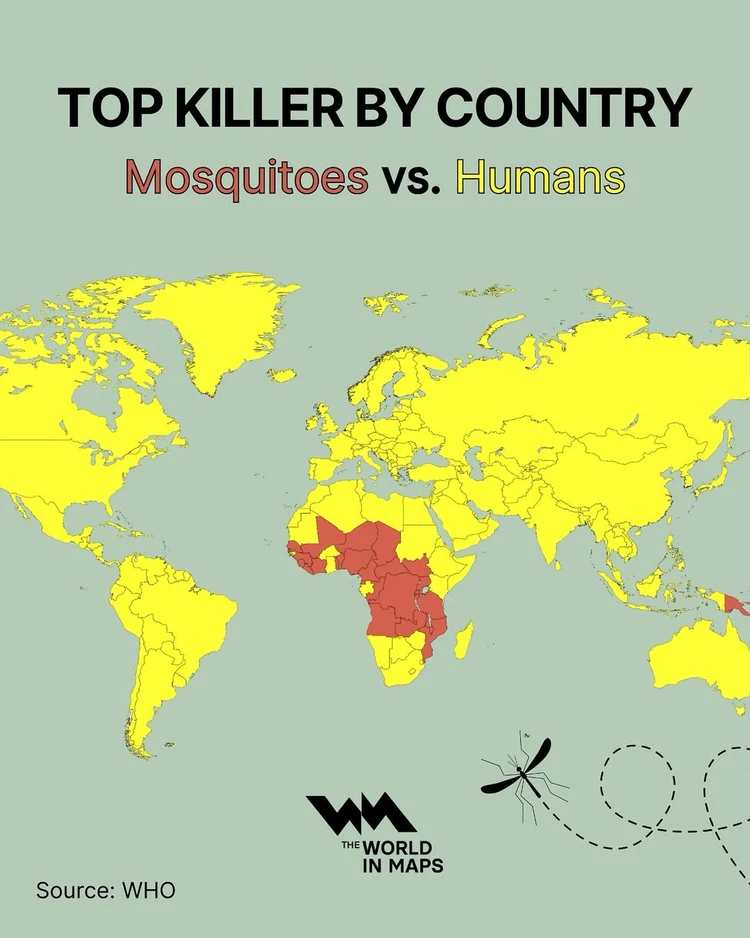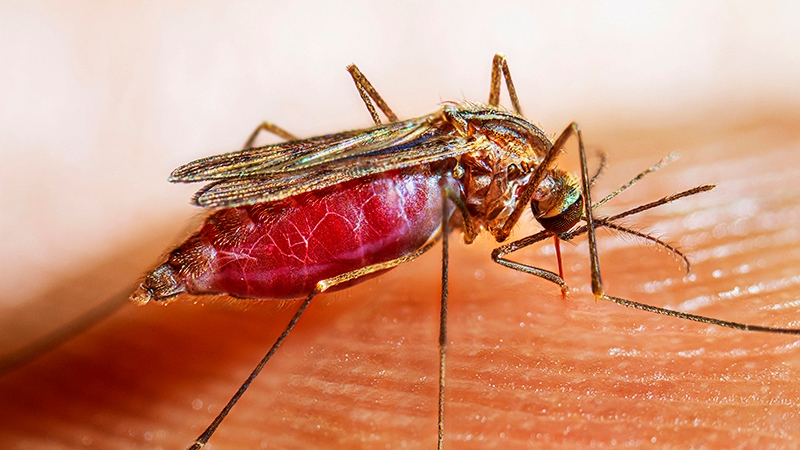A startling new map released by the World Health Organisation (WHO) reveals that in several sub-Saharan African countries, mosquito-borne diseases are responsible for more deaths each year than homicides and road traffic accidents combined.

The map, colour-coded to visualize this deadly trend, highlights nations in red where diseases spread by mosquitoes—such as malaria, dengue fever, and yellow fever—claim the most lives annually. Countries like Nigeria, the Democratic Republic of Congo, Uganda, and Cameroon fall into this category, showing a significant public health crisis.
According to WHO data, malaria alone killed an estimated 619,000 people in 2021, with over 90% of these deaths occurring in Africa. Alarmingly, children under five account for about 80% of malaria fatalities, making the disease both a medical emergency and a humanitarian concern.
The primary culprits are female Anopheles mosquitoes, which transmit the Plasmodium parasite causing malaria. Other deadly viruses like dengue, Zika, chikungunya, and yellow fever are also spread by mosquitoes, but malaria remains the deadliest.
In response, the WHO has prioritized malaria prevention, including the phased rollout of the RTS,S malaria vaccine in countries like Ghana, Kenya, and Malawi. Despite its promise, challenges around production and distribution could delay widespread coverage for years.
Meanwhile, innovative solutions are emerging—from genetically modified mosquitoes to drone-based larvicide spraying. However, experts caution that climate change could worsen the crisis, expanding mosquito breeding grounds and exposing more regions to risk.

